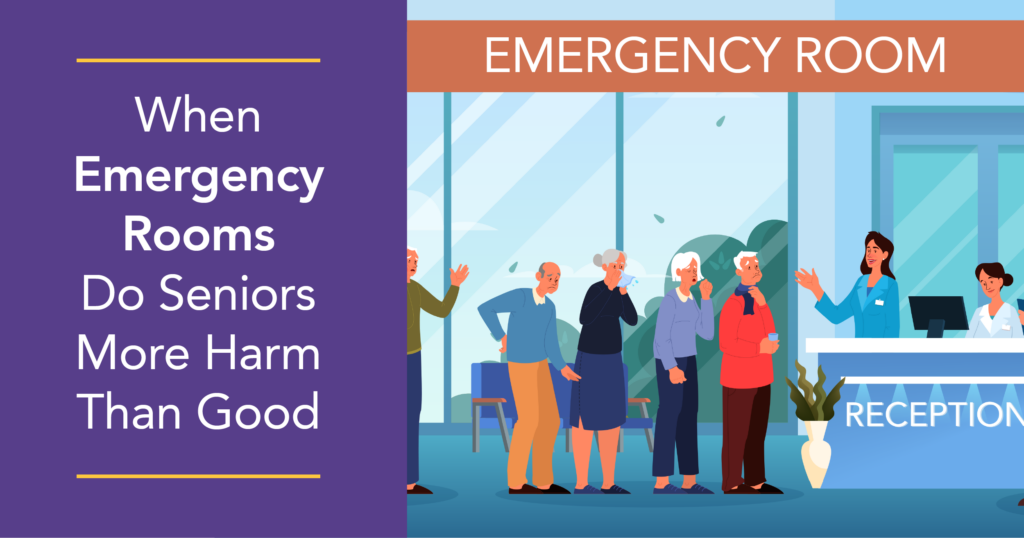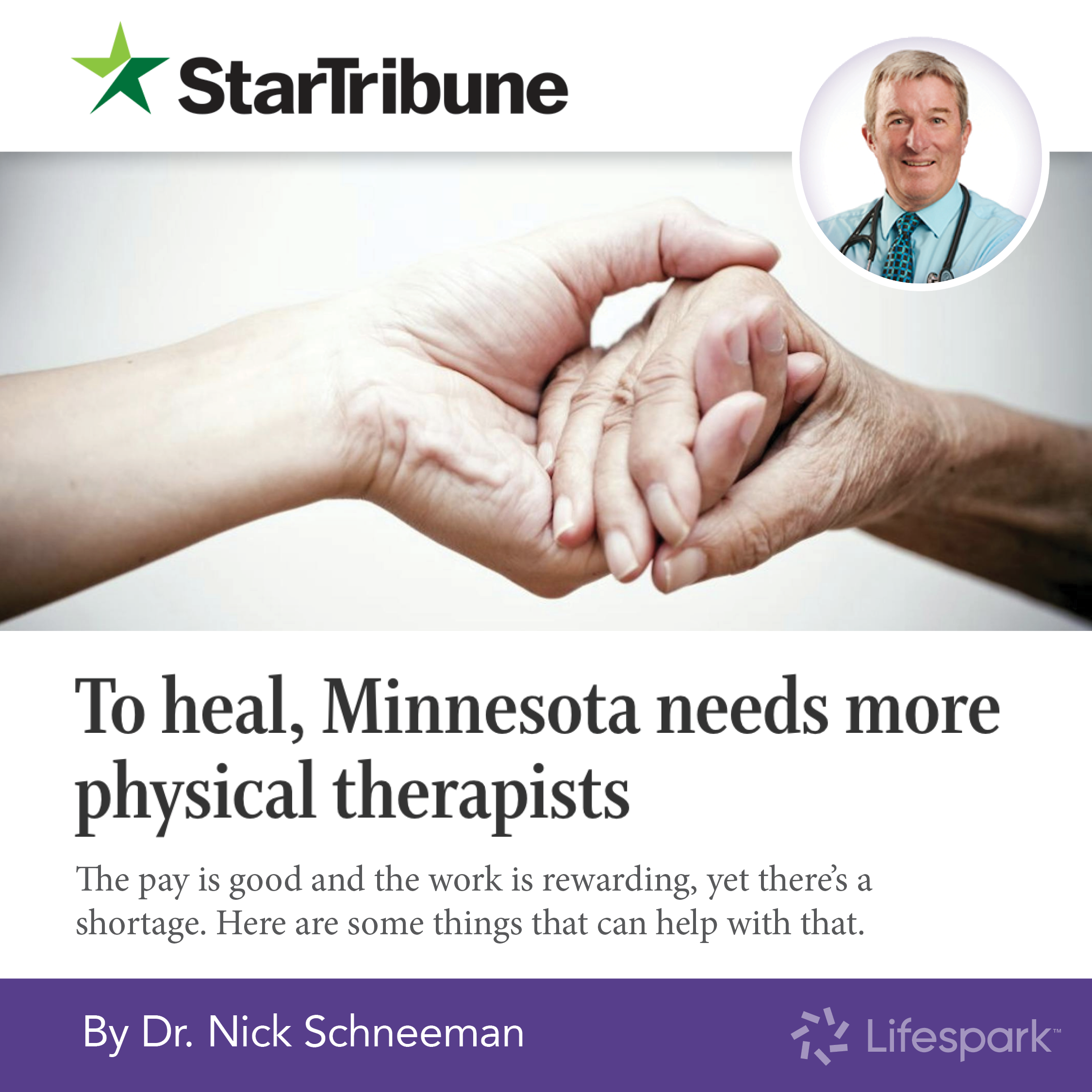
I called my primary care for an appointment because I couldn’t move my shoulder, the pain was pretty brutal. Her office staff responded with: “we don’t have any availability, go to the emergency room (ER).” So off I went where I was greeted by a quick triage check-in and a front seat to the ER waiting room for the next 8 hours.
It wasn’t all for naught, that day opened my eyes to a prevailing issue we are facing in America: overcrowded ERs with people who, from my untrained eye, didn’t need to be there. More than likely, I was one of them. But while I was there, I met a wonderful 82-year-old woman who struck up a conversation with me to pass the time. She was lovely, had so many great stories. Her name as she introduced herself was Mary, my grandmother’s name.
A few hours in, I knew she had to use the bathroom, but no one had come to check on her. I asked if she would like some help. By that point, we had built a relationship, so she felt somewhat comfortable, what other choice did she have? She was alone, in significant pain, and couldn’t wait. I had asked her if she ate today but she wasn’t sure if she was allowed to, she was in for stomach issues and if they needed to do testing, or surgery, she didn’t want to risk having a full stomach. She was starving. She was also on medications, and she told me she couldn’t take them without food – that had to wait, too.
Finally, when they called my name, they called hers, too. The person who got us walked down the hall quickly leaving Mary behind, nearly closing her twice in the automatic doors. I held the door, picked up her purse strap so she wouldn’t trip walking, and gave her a steady arm. Everyone else seemed too busy. It was a bustling ER, lots of people in hallways, activity everywhere, beeps and alarms, some yelling, babies crying, so much noise.
To be honest, I wasn’t ready to leave this woman who for the past 8 hours I got to know. Who will ask the questions, is she ok alone, do they know her son is away, that this is the fifth time she’s been here in the past few weeks (she told me), her granddaughter is her world and she’s coming to visit, and she has meds she hasn’t taken yet. Or that she’s not ready to die. I felt bad for her. She reminded me of my own grandmother, and it tore at me that she was alone.
Unplanned ER Visits – What’s Unnecessary?
This scenario I discovered is not uncommon. One in five seniors feel they have no one to depend on so the ER becomes their crutch, it’s what they know. As in Mary’s case, I understood why. Her health as she explained was complex. She sees several different specialists, but those appointments are only once every few months. When the situation exacerbates and her primary care can’t fit her in, she has only one choice – emergency room. She’s had surgery before which was why she was worried, but according to her, an enema and some fluid usually does the trick. I would imagine having that done at home would be much better.
The reality is 50-55% of emergency visits, for seniors especially, are unnecessary. And in Minnesota, new data shows that 65,000 people who went to the hospital last year didn’t have to if they had another option.
Knowing You As A Person Matters
In a busy ER, providers are in react mode. They don’t have time to ask the questions beyond the emergency. It’s understandable but it also can be a detriment to good health care. To be honest, knowing the person, building meaningful relationships, and being able to keep them at home may prevent the ER all together wherever possible. When you know someone, you know what they prefer, their health and life goals, and how to bring their anxiety level down by talking about their granddaughter.
That’s exactly what’s happening at Lifespark with the addition of Urgent Response Services for Lifespark COMPLETE members who have a qualifying health plan like UCare or Blue Cross and Blue Shield of Minnesota Medicare Advantage.
When health issues arise in between visits, they know whom to call first. An immediate line to a human who can triage their situation and answer their question, set up telehealth with a physician, deploy Mobile Urgent Responders to provide ER-level care in the home, or call 911 when it’s truly needed then meet them there and advocate for them to ensure care aligns with their goals.
For the frequent flyers or ER boarders as it’s been termed, they no longer have to wait long hours and family can be there in their home or getting a direct line of communication to know what’s happening. That would have saved Mary a lot of time, never mind the out-of-pocket expense of yet another ambulance ride of roughly $1,000 and looming hospital bills. The average ER visit is upwards of $3,000 and according to Dr. Nick Schneeman, Chief Medical Officer for Lifespark, that cost doubles when cognitive issues are present. Not to mention the simple cost to the person for an option that may just do more harm than good when it comes to senior health.
Health At Home
What can you do if your doctor tells you to go to the ER?. Ask them if there are other options available like an urgent care or hospital at home program available to you. Look for senior-savvy providers who provide in-home primary care to tackle unplanned and unnecessary hospitalizations or emergency room visits at home.
Mary shared that when she was a young mother, the doctor came to her when her children were sick. I told her where I work, they do the same for the seniors we serve. That gave her pause. Unlike the 50s and 60s, the hospital no longer needs to be the first line of defense. Let’s leave that for those who truly need it, for everything else, home is always best.
For more information about Lifespark’s Urgent Response Services with Lifespark COMPLETE visit: https://lifespark.com/complete/




